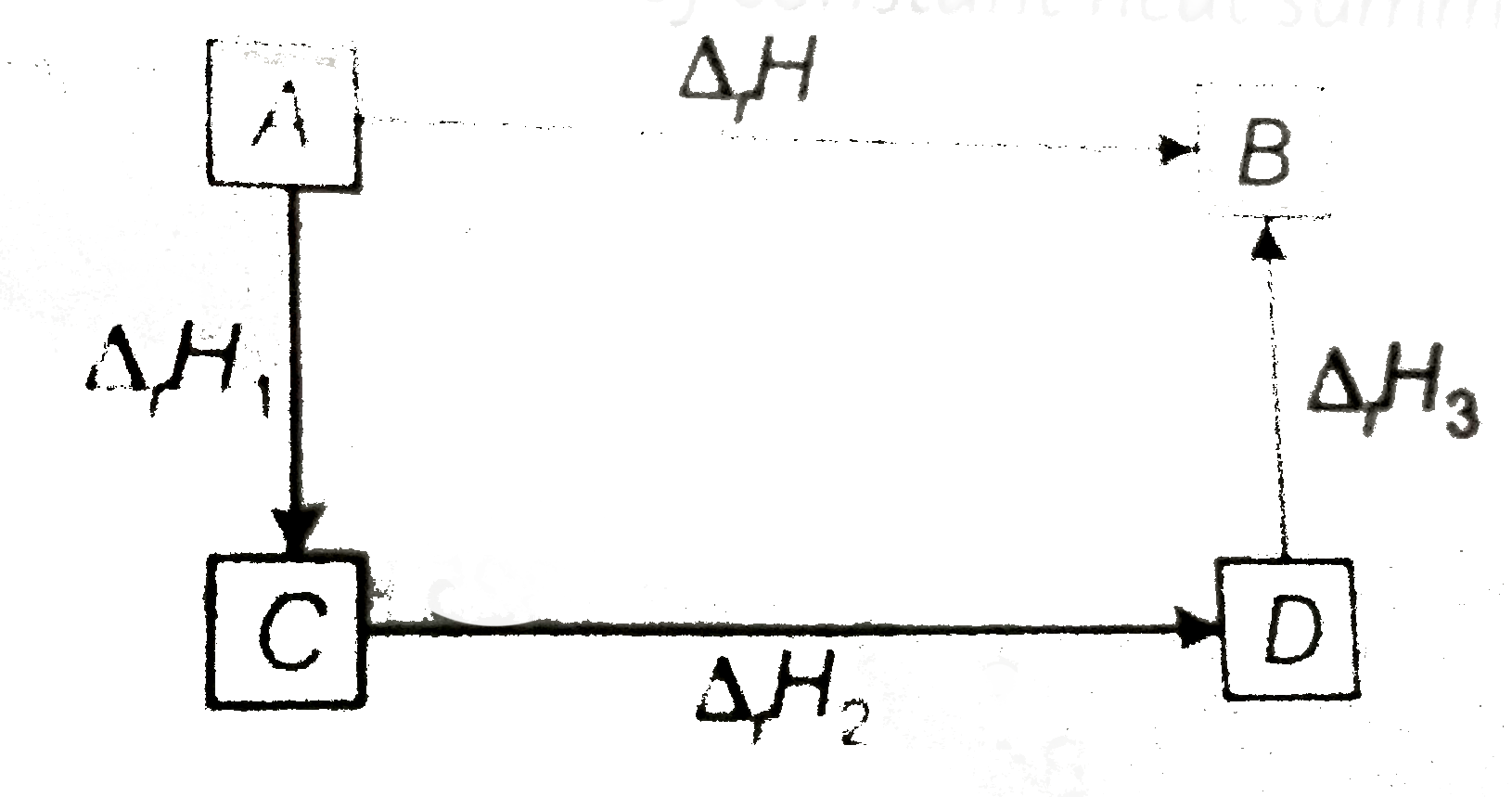Enthalpy is an extensive property. In general, if enthalpy of an overall reaction A→B along one route is ΔrHandΔrH1,ΔrH2,ΔrH3..... Represent enthalpies of intermediate reactions leading to product B. What will be the relation between ΔrH overall reaction and ΔrH1,ΔrH2... etc for intermediate reaction.
In general, if enthalpy of an overall reaction A→B along one route is ΔrH and ΔrH1,ΔrH2,ΔrH3.... Representing enthalpies of reaction leading to same product B along another route, then we have
ΔrH=ΔrH1+ΔrH2+ΔrH3+.....
Note. For a general reaction Hess's law of constant heat summation can be represented as

Topper's Solved these Questions
Similar Questions
Enthalpy is an extensive property.In general, if enthalpy of an overall reaction A→B along one route is ΔrH and ΔrH1+ΔrH2+ΔrH3 ... Represent enthalpies of intermediate reactions leading to product B.What will be the relation between ΔrH for overall reaction and ΔrH1,ΔrH2....etc, for intermediate reactions.
View SolutionEnthalpy is an extensive property. In general, if enthalpy of an overall reaction A→B along one route is ΔrHandΔrH1,ΔrH2,ΔrH3..... Represent enthalpies of intermediate reactions leading to product B. What will be the relation between ΔrH overall reaction and ΔrH1,ΔrH2... etc for intermediate reaction.
View Solution
Knowledge Check
If enthalpy of an overall reaction X>Y along one route is ΔrHandΔrH1,ΔrH2,ΔrH3…….representing enthalpies of reaction leading to same product Y then ΔrH is
AΔrH=ΔrH1+ΔrH2+ΔrH3……BΔrH=ΔrH1×ΔrH2×ΔrH3…….CΔrH=ΔrH1+ΔrH2−ΔrH3…..DΔrH=ΔrH1×ΔrH2×ΔrH32……If enthalpy of overall reaction X→Y along one route is ΔrHandΔrH1,ΔrH2,ΔrH3…. Representing enthalpies of reactions leading to same product Y then ΔrH is
AΔrH=ΔrH1+ΔrH2+ΔrH3…BΔrH=ΔrH1×ΔrH2×ΔrH3…CΔrH=ΔrH1+ΔrH2−ΔrH3…DΔrH=ΔrH1×ΔrH2×ΔrH32…The enthalpy of reaction, Δ1H, is
AΔr=H (product) +H (reactants)BΔr=H (reactants) −H (products)CΔr=H (product) −H (reactants)DΔr=H (reactants) +H (products)
Enthalpy and Relation Between delta H & delta U
View SolutionWhat is the basic difference between the two notations ΔrH and ΔfH?
View SolutionThe temperature dependence of equilibrium constant of a reaction is given by In Keq=4.8−2059T. Find ΔrGΘ,ΔrHΘ,ΔrSΘ.
View SolutionA: Total enthalpy change of a multistep process is sum of ΔH1+ΔH2+ΔH3+....
R: When heat is absorbed by the system, the sign of q is taken to be negative.
View SolutionΔrH of which of the following reactions is zero ?
View Solution

